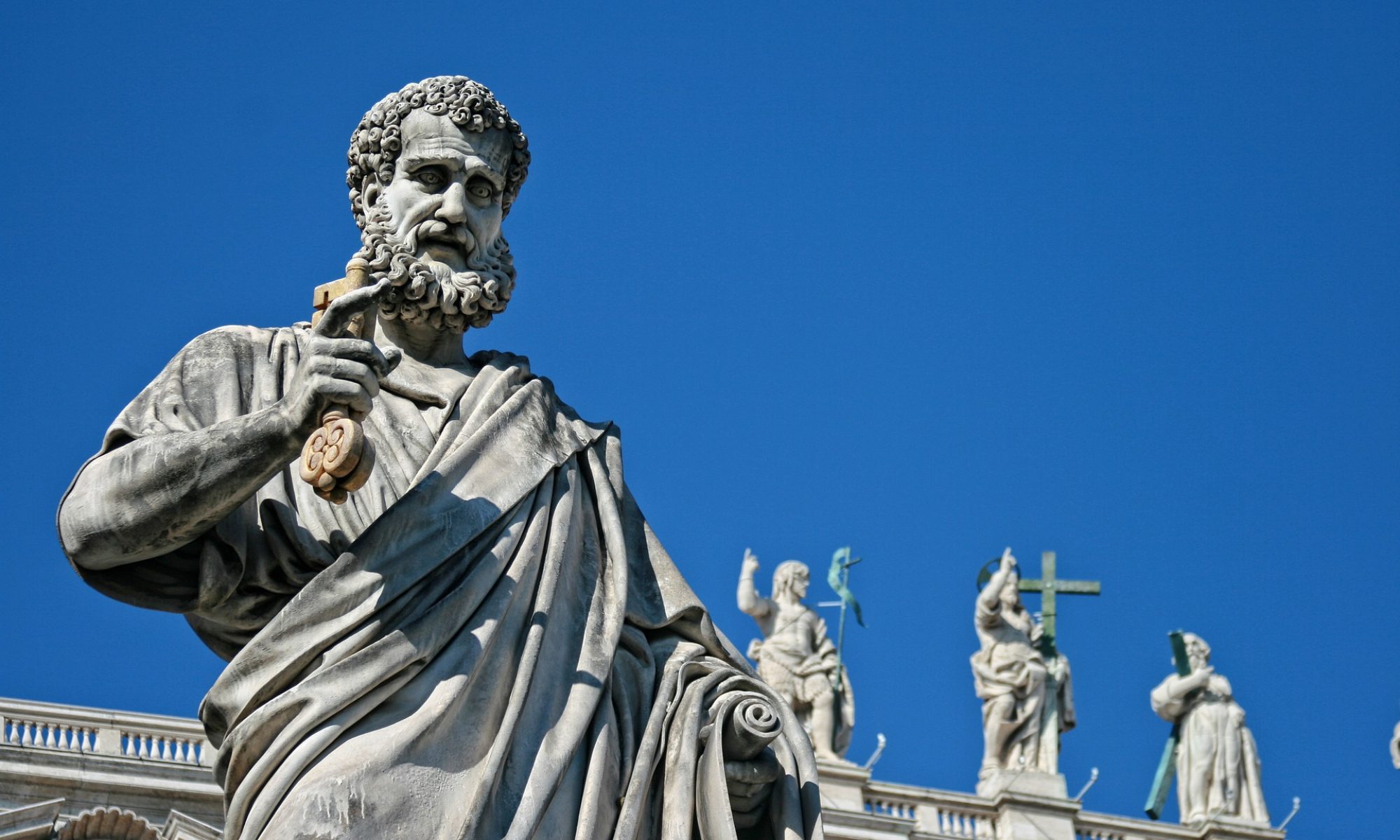March 12th 2013, Cardinal Bergoglio was elected to the chair of Peter becoming Pope Francis, the 266th Pope of the Roman Catholic Church. This count takes for granted that Peter was the first Pope and that an unbroken chain of successors followed up to now. This theological account of Church history is, of course, disputable but that is not the point here. The point is to take advantage of this symbolic event to begin to see what is emerging as far as Francis’ interpretation of the Papacy is concerned.
On-Going Exposure
Francis speaks every day in public. He celebrates Mass every morning at 7:00 AM and a summary of his daily homily quickly becomes available for the media. The gist of it is twittered. His speeches are much simpler and shorter than Benedict XVI’s, the language is plain, and the structure often highlights single important words which form the bulk of his reflection. There is always a personal application and the recipient of it is “us” rather than “you” or “them”. He uses many fewer quotations from Church tradition (the Church Fathers were always present in Ratzinger’s talks) and more references to daily episodes of life and Bible quotations. Francis likes to be surrounded by people. He chose not to live segregated in the papal apartments but to stay in the guest house in the Vatican, sharing the dining room and other common spaces with others. His Wednesday’s public audiences in St. Peter’s square are less concentrated on words and more devoted to personal interactions. He normally goes around the square, stopping his papamobile here and there to touch people, kiss babies, and play with children exchanging hats and receiving gifts. The emotional aspect prevails over the cognitive one. Francis is less of a hieratic, unreachable Pope and more of an “older brother” or fatherly type of Pope who is showing all his charming personality.
From the End of the World to the Edges of the World
As soon as he was elected, Francis told that he was coming from “the end of the world”. Ratzinger had come from the “heart” of Europe, he comes from the ends of the globe from a Euro-centric or Western perspective. He is conscious of his origins in the Global South and his background also determines his goal. He often says that the mission of the Church is to go to the peripheries of the world and to be attracted by those who are outside of the various centers of power and influence. Where he comes from is where he wants to go. Now that he leads the “center” of a global institution, it will be interesting to see what going to the peripheries will mean for a centralized and self-referential organization like the Vatican. Francis seems to be willing to shift the attention to the ends of the world, geographically and socially.
Infiltration Rather Than Confrontation
His style of argumentation is also coming through. Whereas Ratzinger used to be seen as confrontational in his approach to Western culture (often banging on the head of “nihilism”, the “dictatorship of relativism”, etc.), Bergoglio is perceived as a mild person who stirs attention rather than hitting his hearers. On life issues he is traditional but not in an irritating way for secular people. On marriage he is conservative but capable of maintaining an open dialogue with the gay lobby. His strategy seems to be that of infiltration rather than confrontation. On the inter-faith dialogue he always stresses the brotherhood of all religious people, leaving aside the controversial issues. Mercy has the final word. He has an embracing attitude rather than a tug-of-war approach.
Spiritual Ecumenism
This fraternal mood is also true as far as ecumenism is concerned. Francis talks a lot about Christian unity and emphasizes the importance of common prayer and brotherly relationships. Technically, this is what “spiritual ecumenism” is all about, i.e. unity that is expressed in joint prayer, although he has not been using this language so far. All non-Catholic counterparts, from Liberal Protestants to many Evangelicals, seem to like this and have the impression that he is rather easy-going as far as unity is concerned. He recently told the audience in St. Peter’s square that he had spent half an hour in prayer with an Italian Evangelical pastor (June 19th). Less people paid attention to what he had just said before, i.e. that unity means being in fellowship with the Pope and the bishops. Beyond the seemingly Pauline language, he endorsed the Roman Catholic view that unity means to be cum Petro (with Peter) and sub Petro (under Peter). The relationship with the Pope defines Christian unity. Meanwhile, he has been outspokenly Marian in his devotions and very Eucharistic-centered in his teaching.
Poverty, Poverty …
Poverty is a catchword of Bergoglio’s pontificate. The choice of the name Francis was indicative of an entire program. He has certainly given a more sober bent to what it means “to live like a Pope”. He wears an iron cross, instead of a golden one. He uses less luxurious vestments. He calls for a simple lifestyle. In commenting on the recent financial scandals, he humorously said that Peter did not have a bank! The problem is that the Pope has a bank! Will Francis have the courage to close it? The reference to Francis of Assisi marks his grandeur but perhaps his limits as well. Francis spoke of poverty and lived in poverty in the XIII century, but the Church he submitted to remained opulent and went on pursuing its mundane affairs. Will Pope Francis be able or willing to implement Church practices that are marked by simplicity and frugality? Perhaps we should wait another 100 days to answer.
Leonardo De Chirico
Rome, 22nd June 2013
